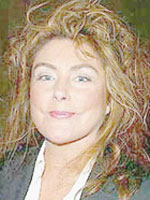

It also reached number one in Australia and Canada. Billboard Hot 100 for 36 weeks, then a record for a female artist, peaking at No. Her signature song, the platinum-certified 1982 single "Gloria", stayed on the U.S. Laura Ann Branigan (J– August 26, 2004) was an American singer, songwriter, and actress. "Gloria 2004" was released with several remixes on 26 April 2004. I have to end every show with that song, and people just go crazy."īranigan later released a hi-NRG re-recording of the song just a few months before her death. And I always get the same reaction wherever I go, and whenever I perform it. In 2003, Branigan characterized "Gloria" as "Certainly my signature song. Ultimately, Branigan recorded an English re-invention of "Gloria" as a character study of, in her words, "a girl that's running too fast for her own steps", the cover lyrics of which were written by Trevor Veitch, the contractor for the Branigan album, to which he also contributed guitar work while Branigan also did her part in co-writing of the cover song's lyrics. Branigan recalled that on hearing the Tozzi track, "We gave it the American kick and rewrote the lyrics and off she went." Branigan's remake of "Gloria" was produced by White and co-produced by Greg Mathieson, who had been the arranger of, and the keyboardist on Tozzi's original song, while also being the primary keyboardist on the Branigan album.īranigan told People magazine that she and her producers had at first attempted an English version of Tozzi's "Gloria" in the romantic mode of the original, changing the title to "Mario", but that this seemed ineffective.


A 1982 cover version by American singer Laura Branigan peaked at number two on the US Billboard Hot 100 and has been certified platinum by the Recording Industry Association of America (RIAA).Ītlantic Records' managing director Doug Morris suggested that Laura Branigan work with producer Jack White, who suggested that she record an English version of Tozzi's hit "Gloria". "Gloria" is a 1979 love song written and composed in Italian by Umberto Tozzi and Giancarlo Bigazzi, and afterwards translated to English by Jonathan King.


 0 kommentar(er)
0 kommentar(er)
